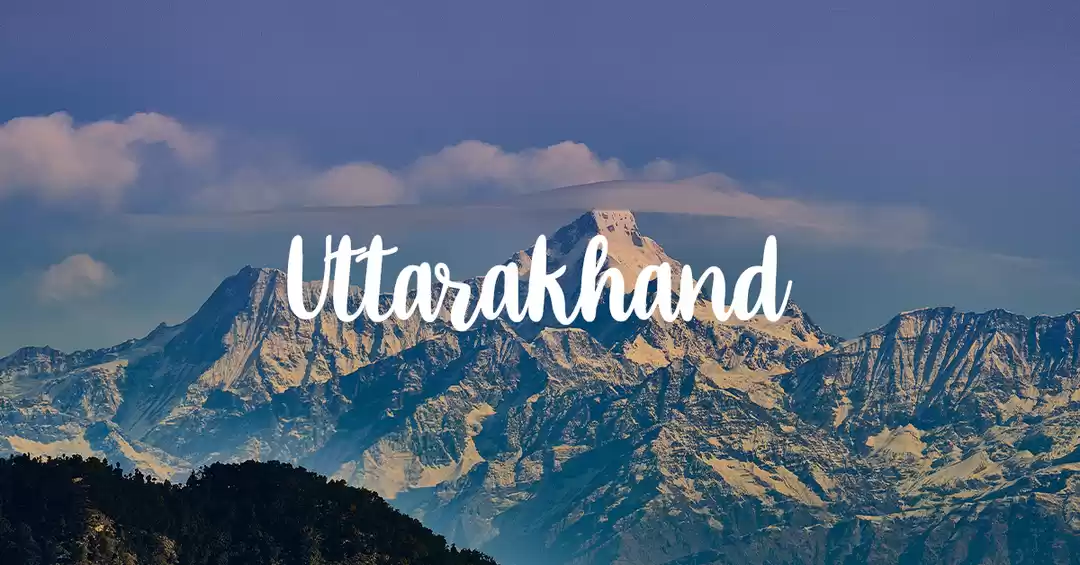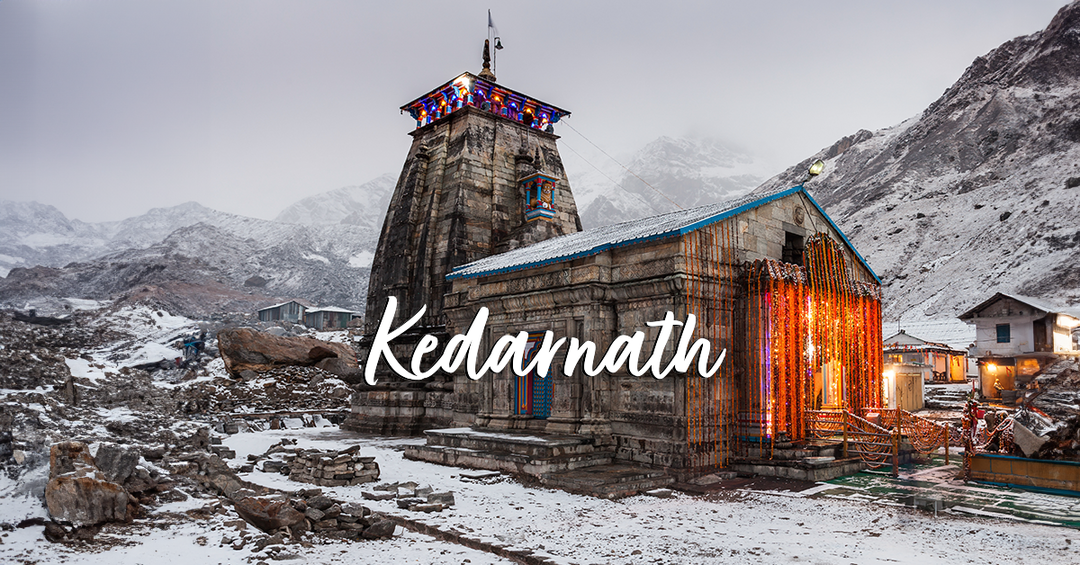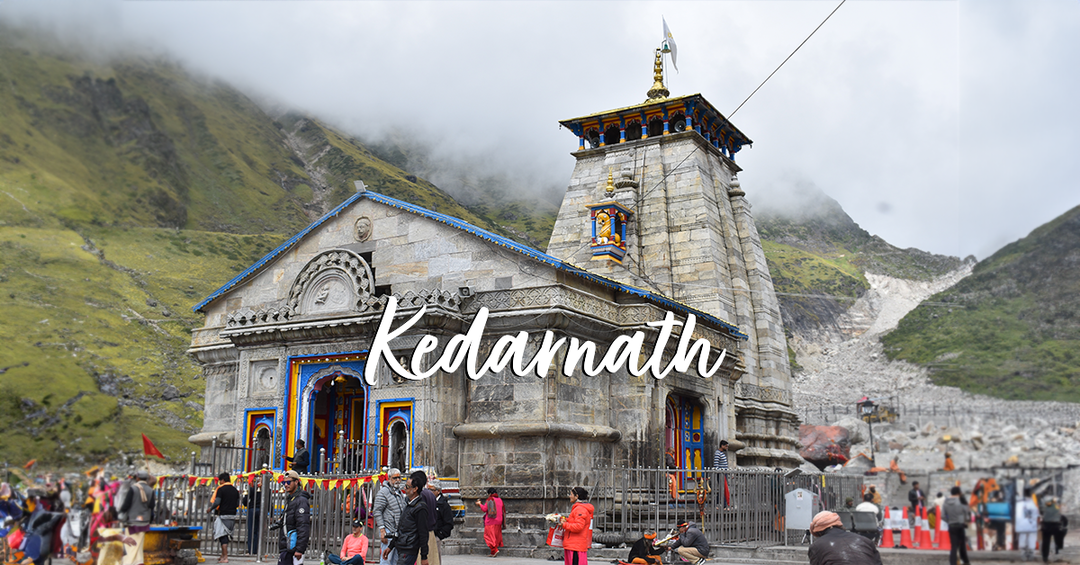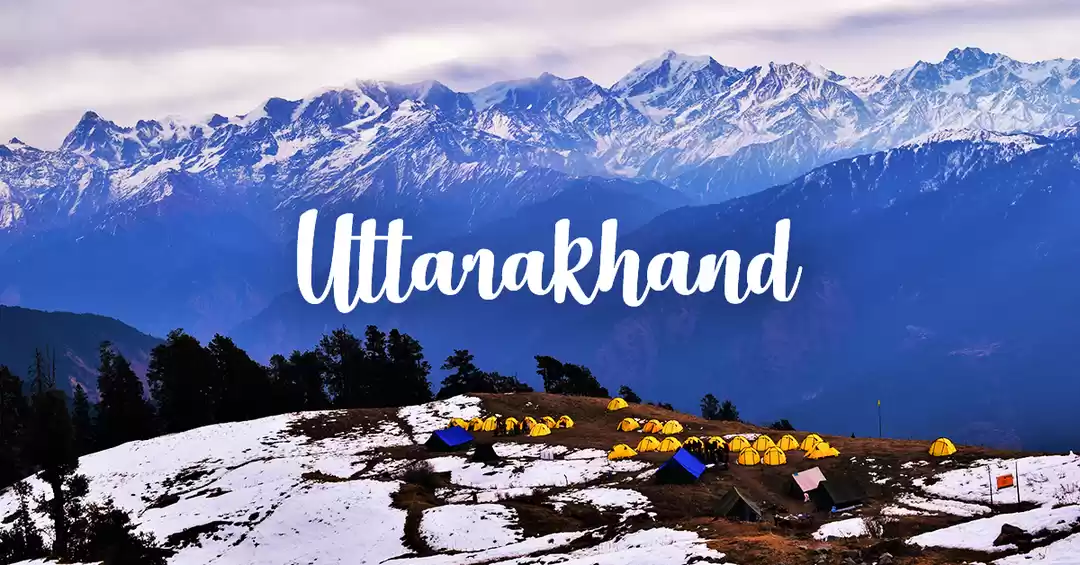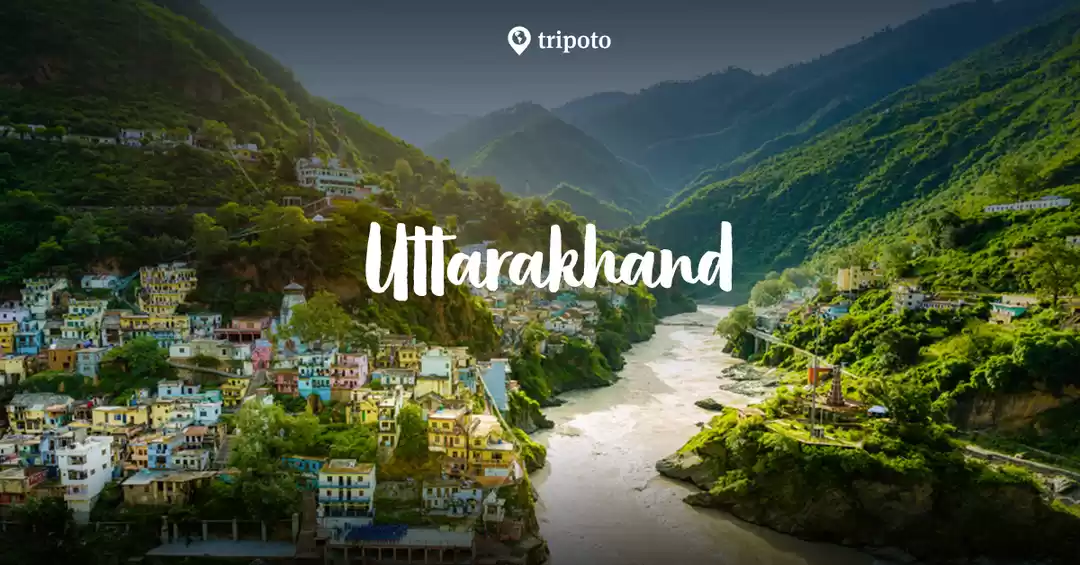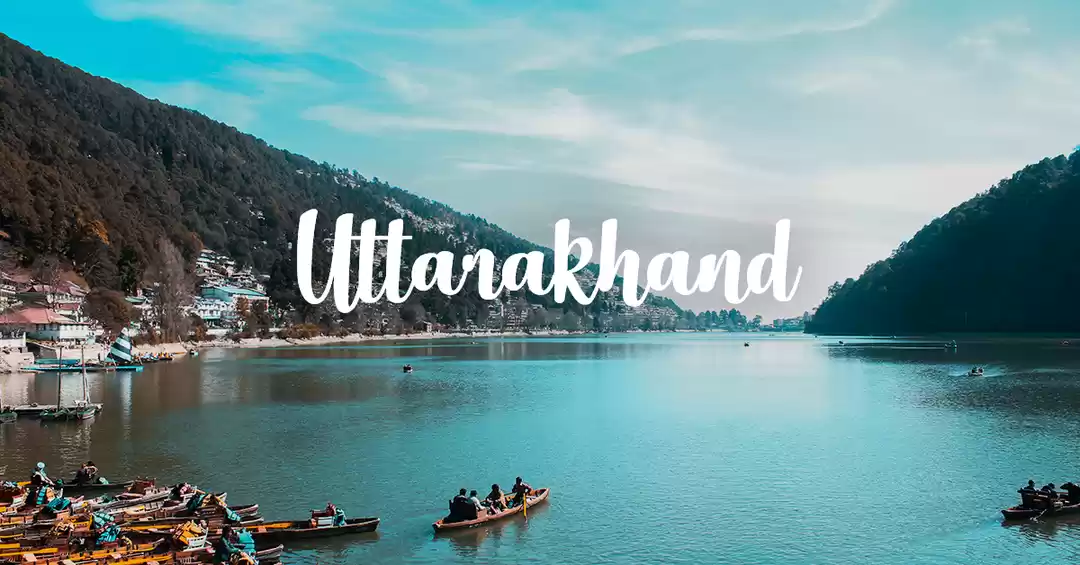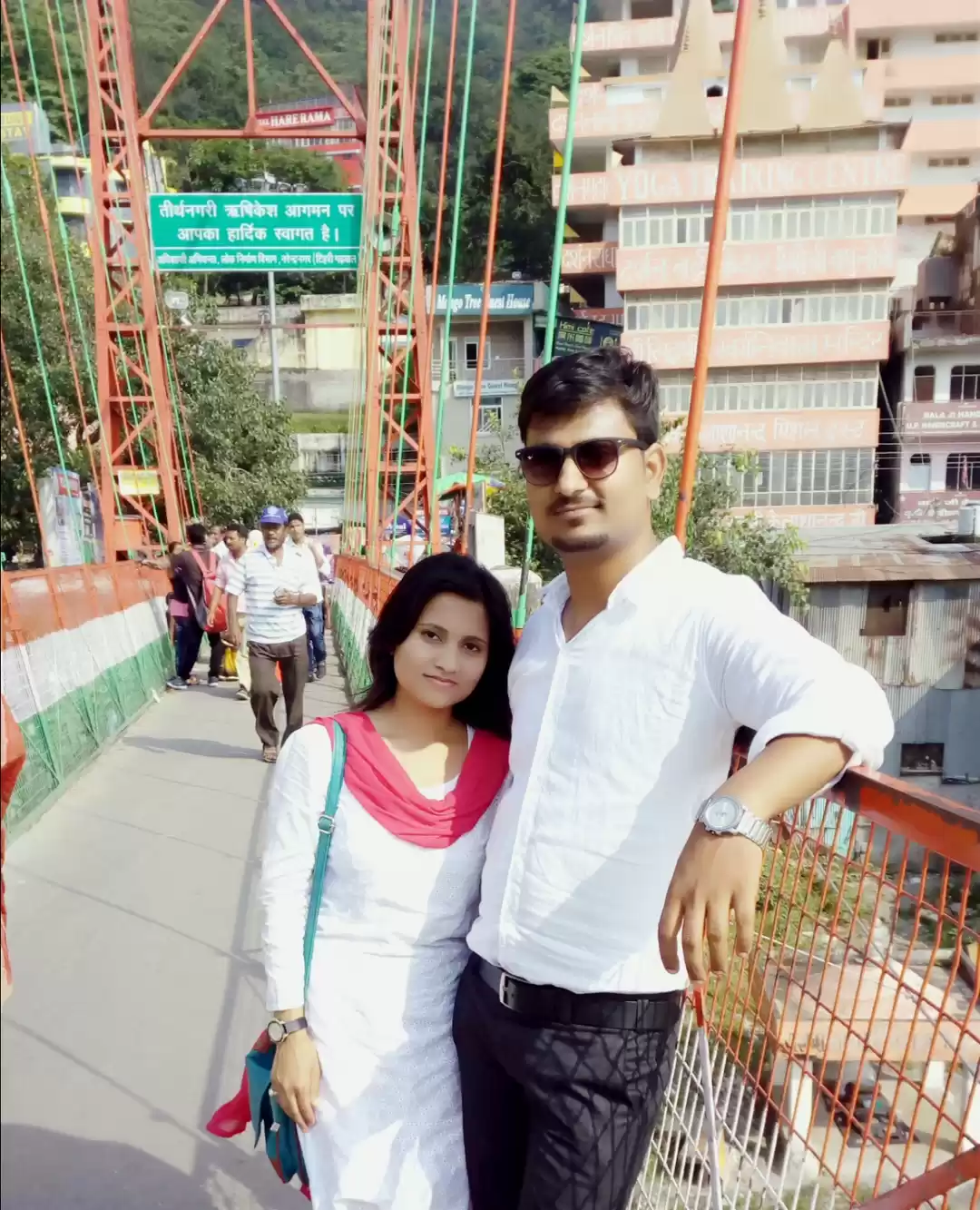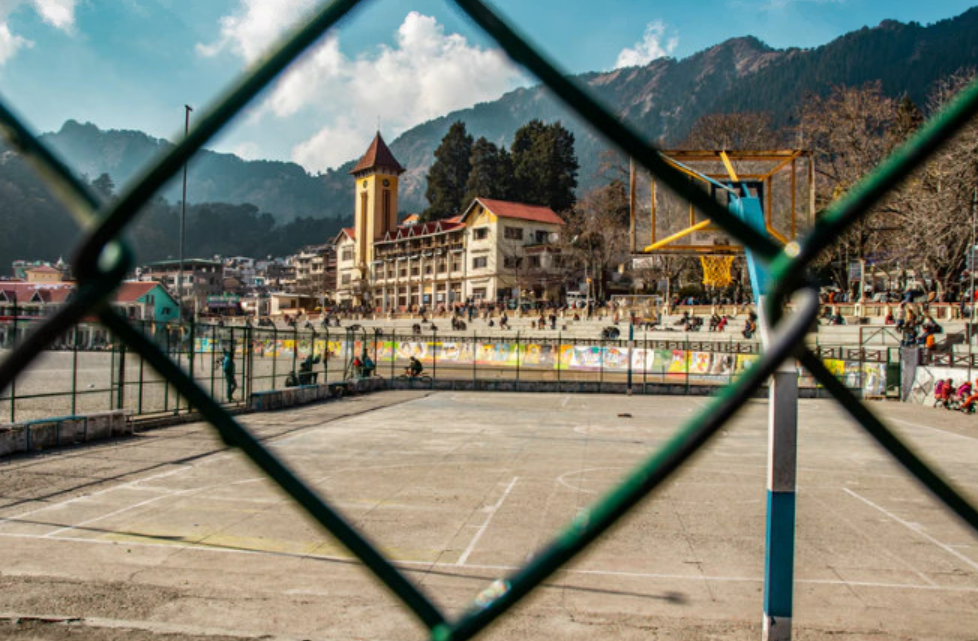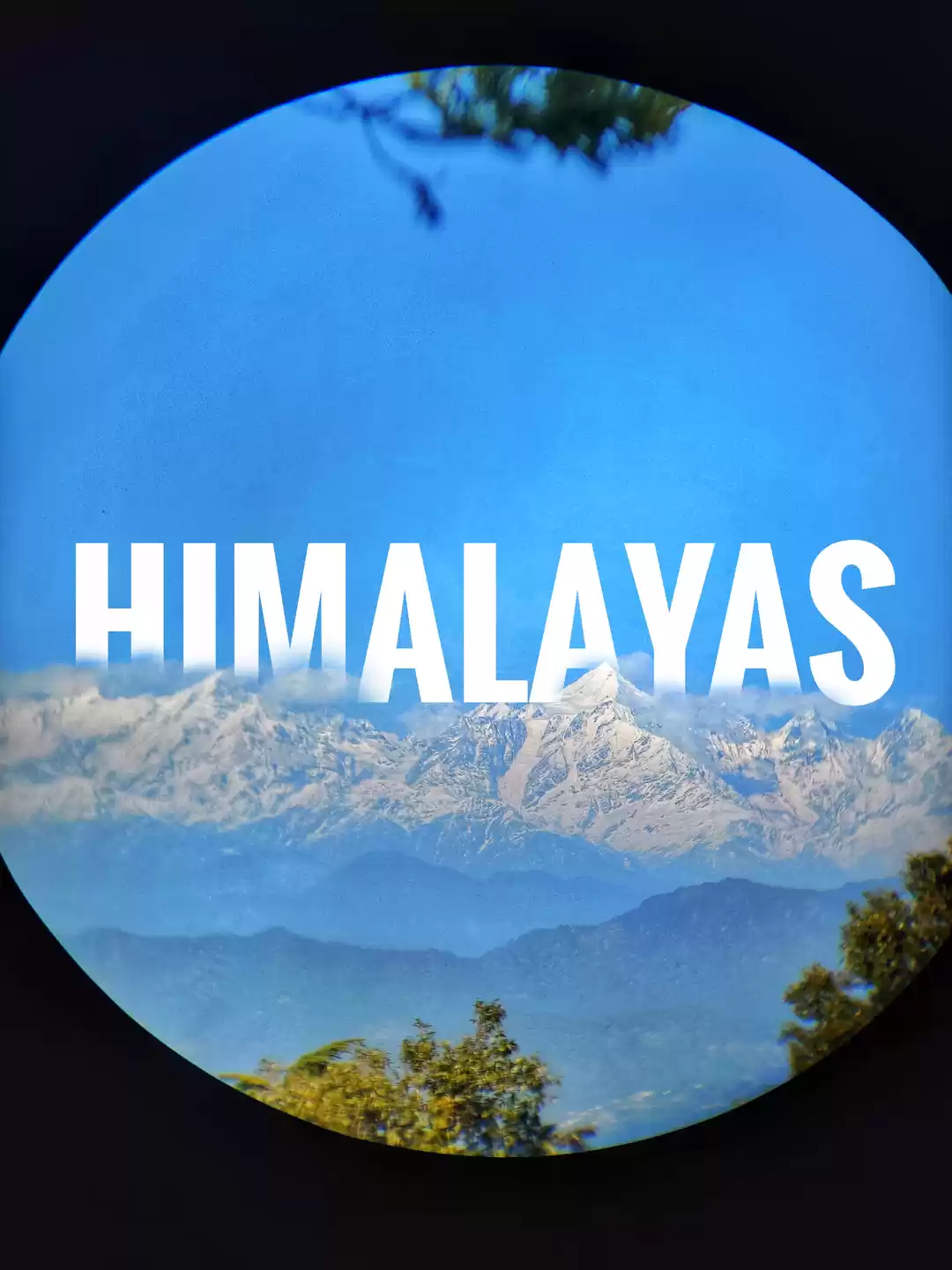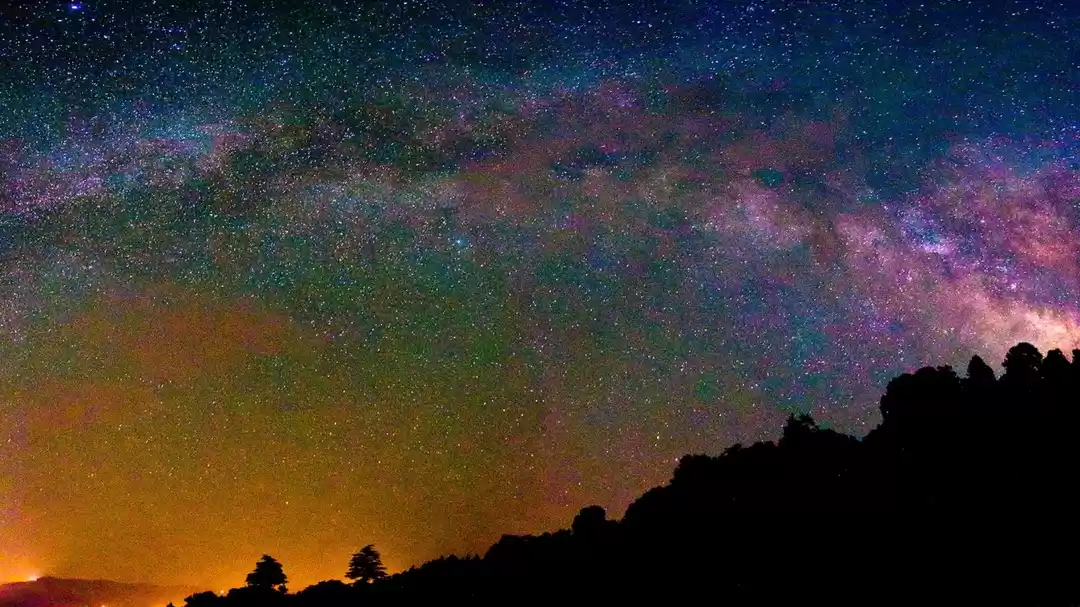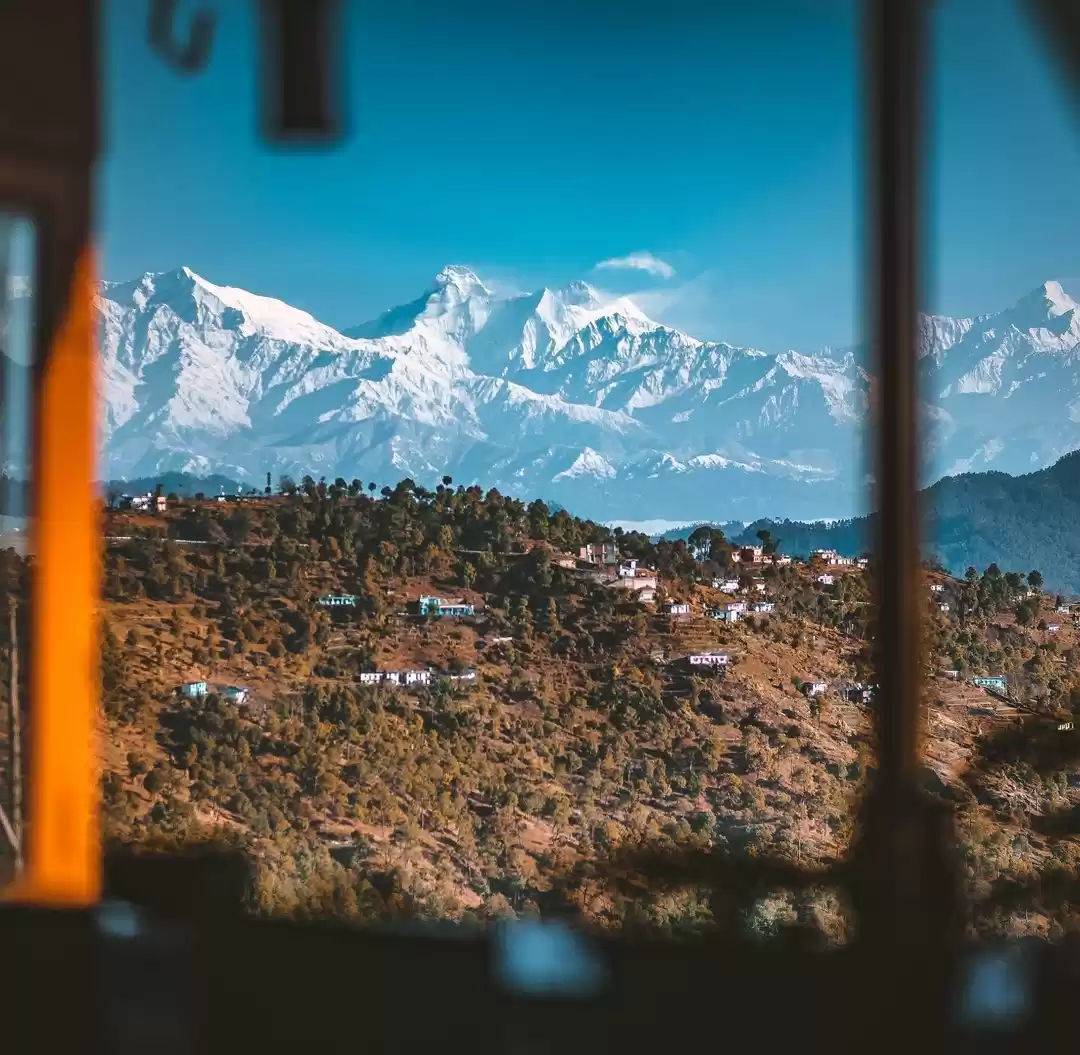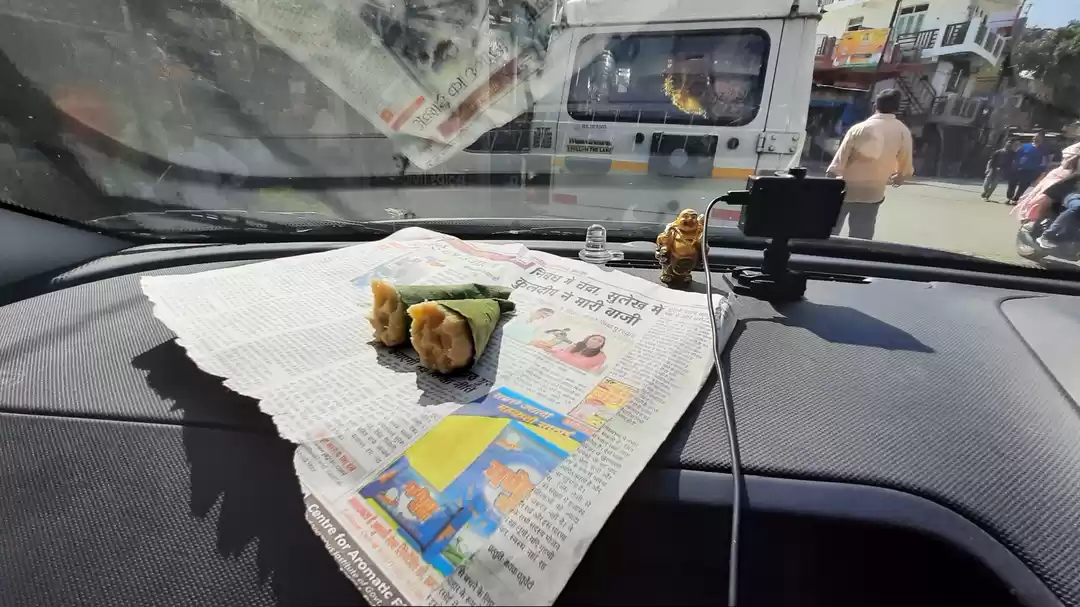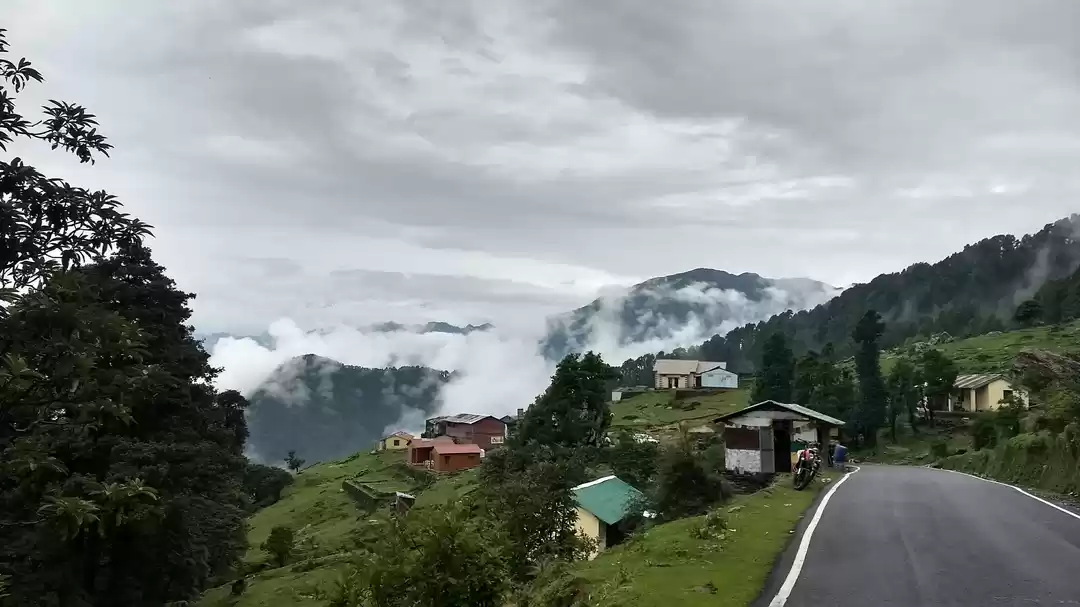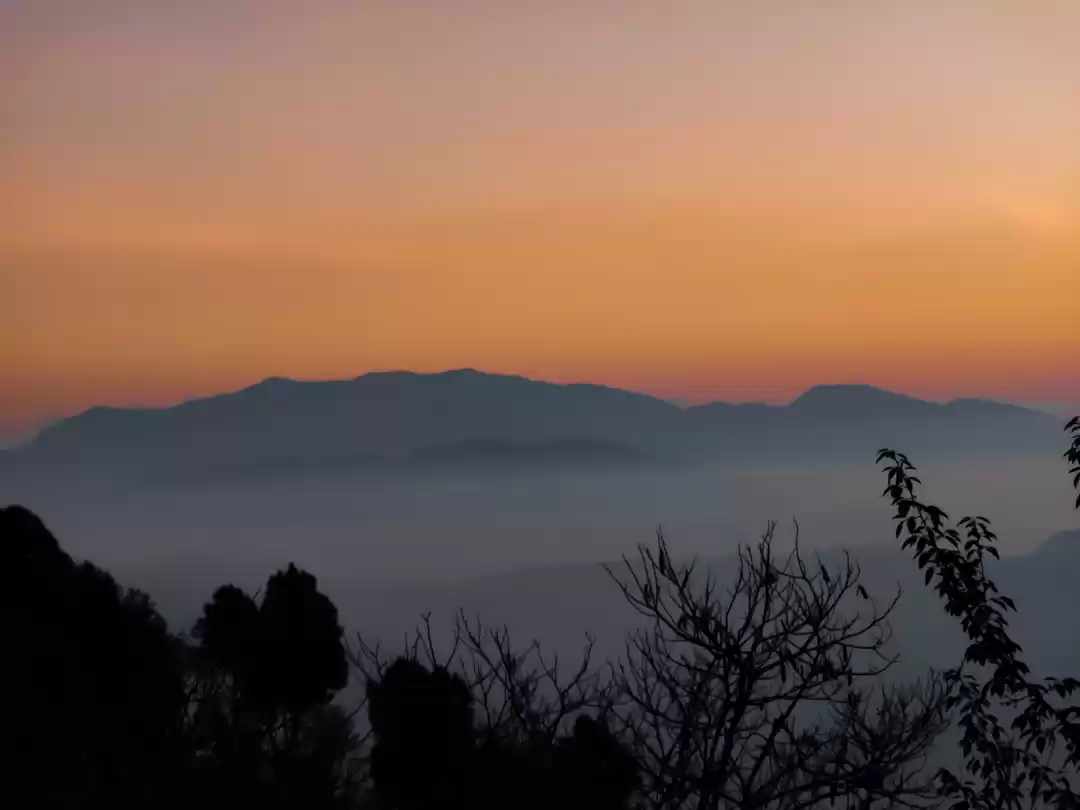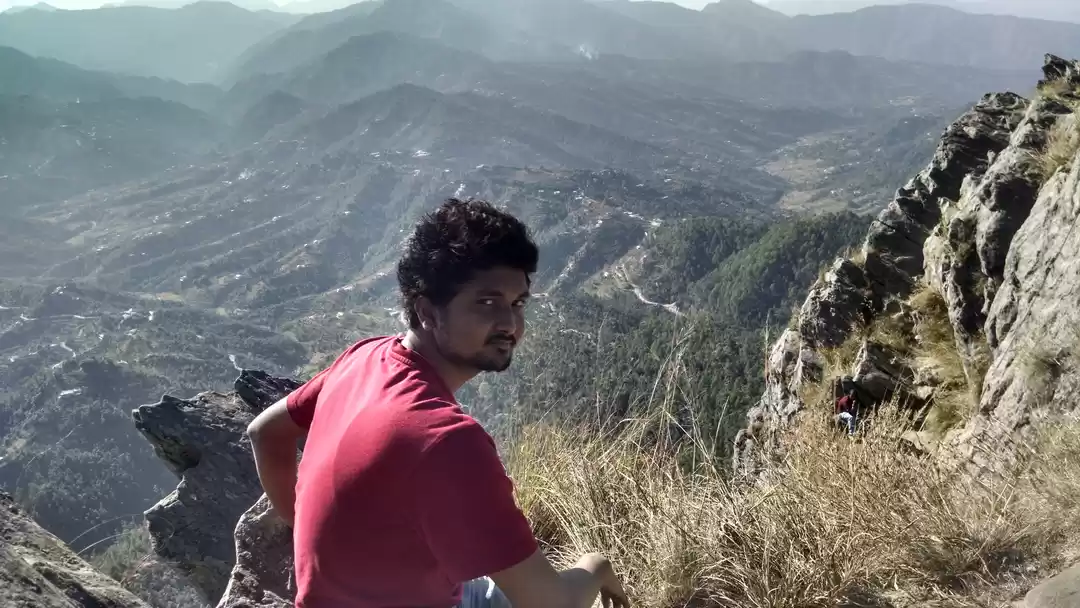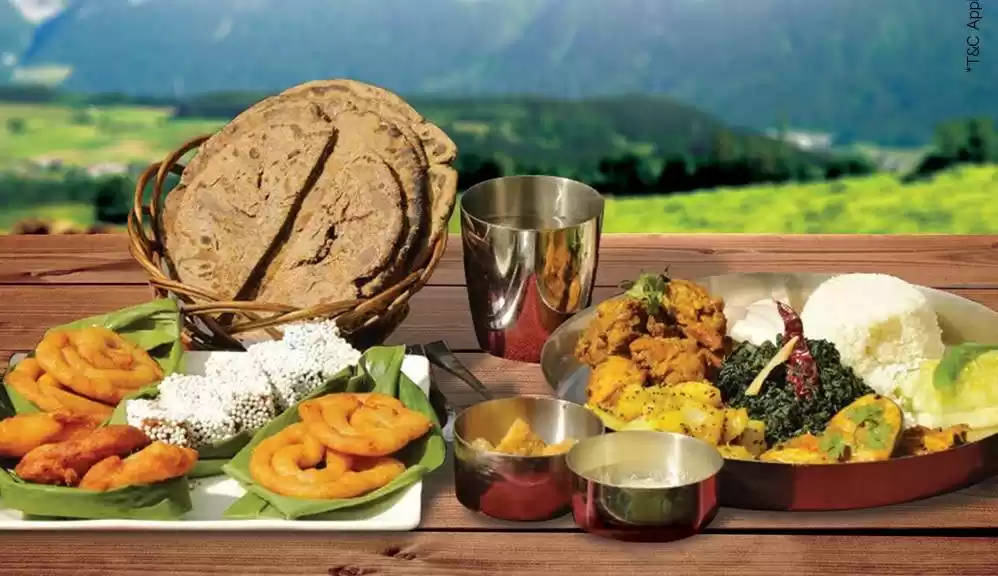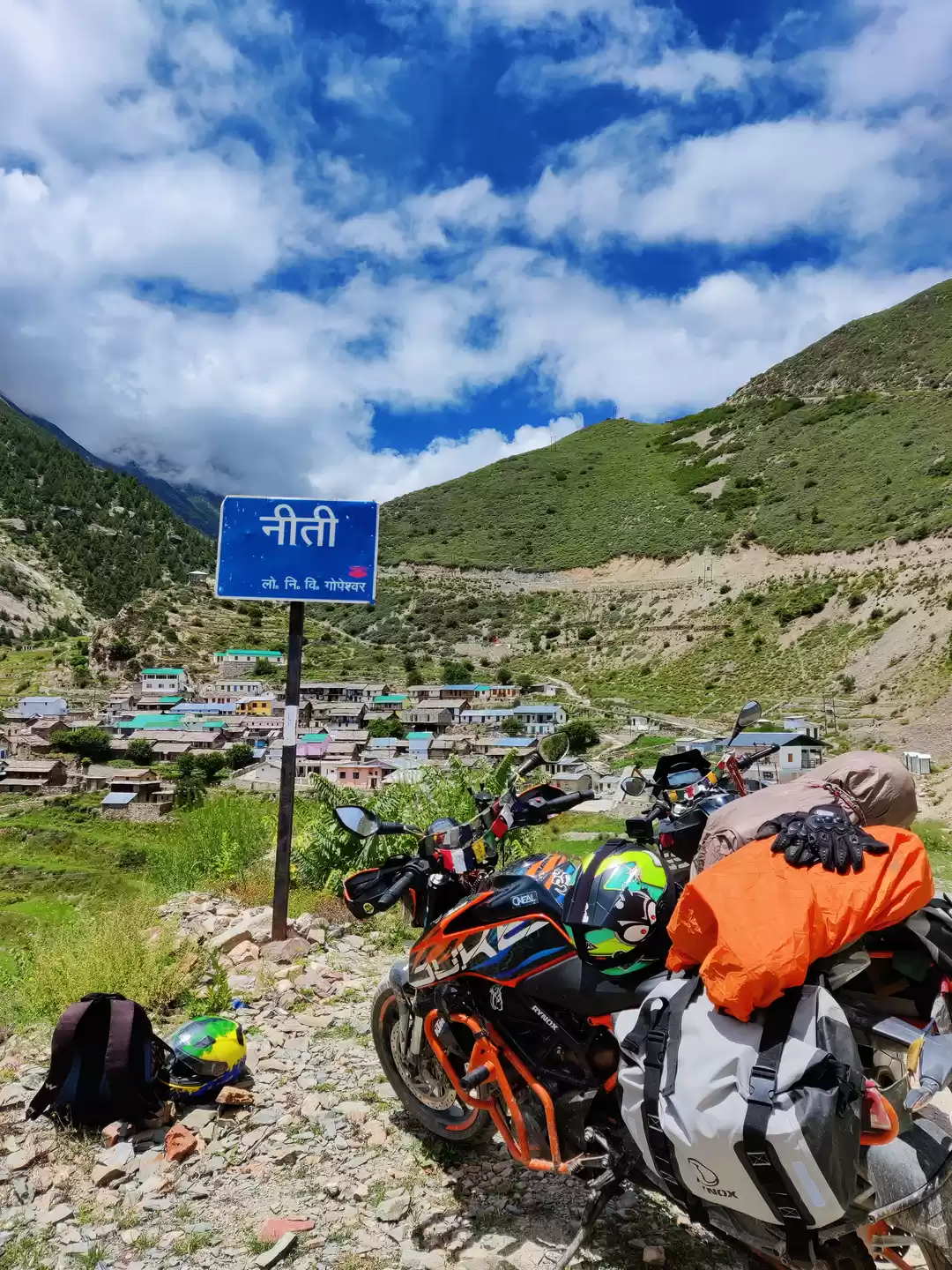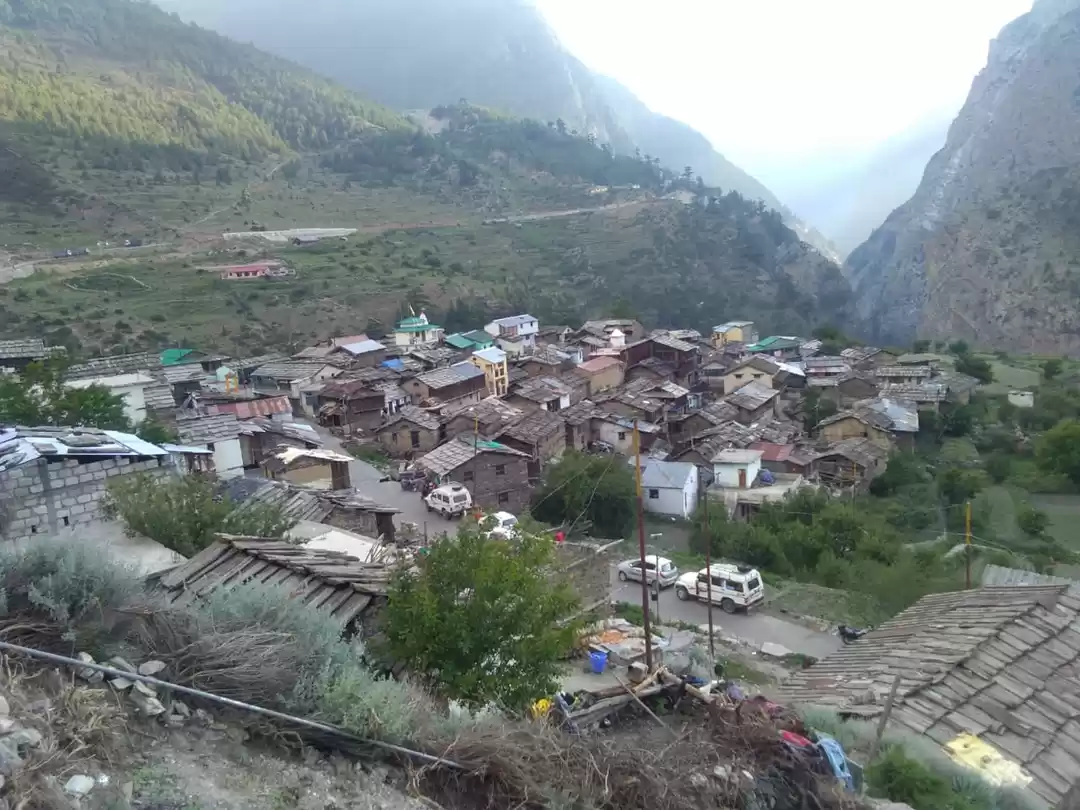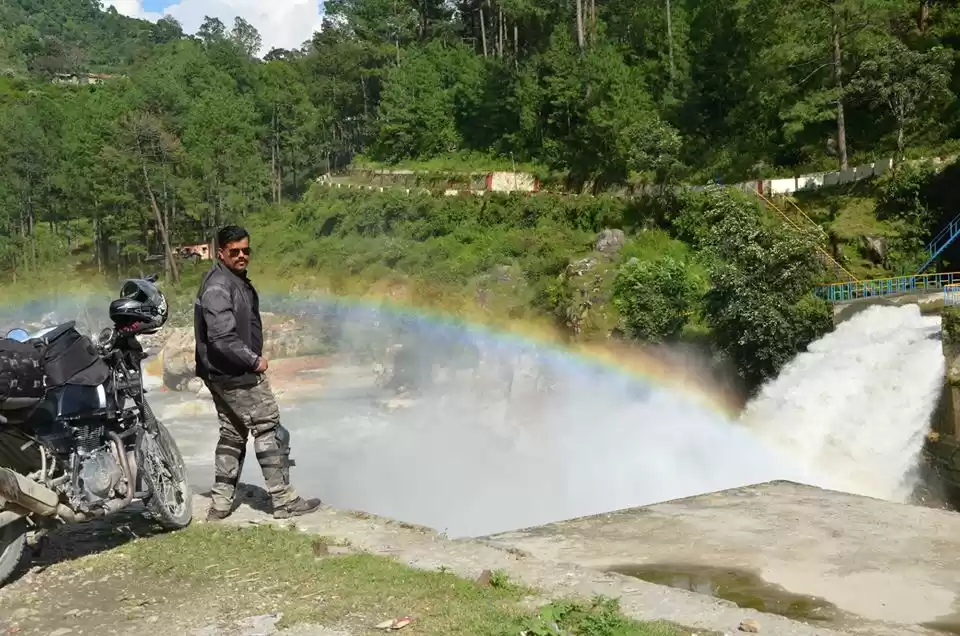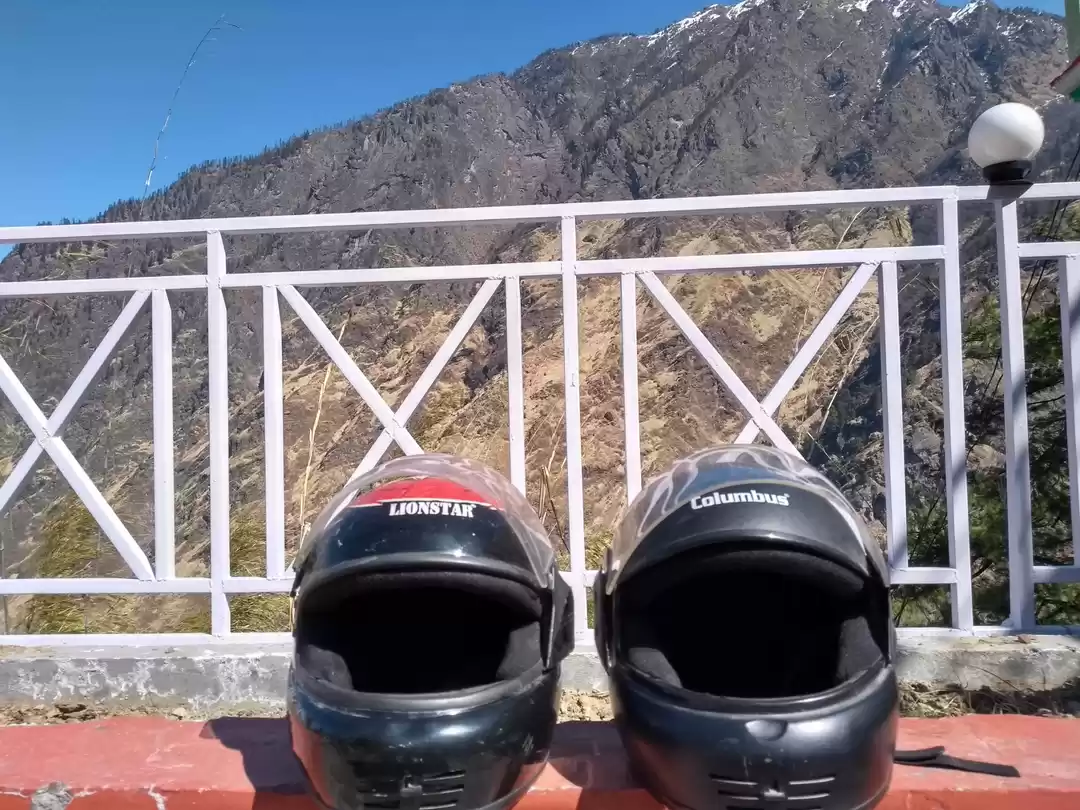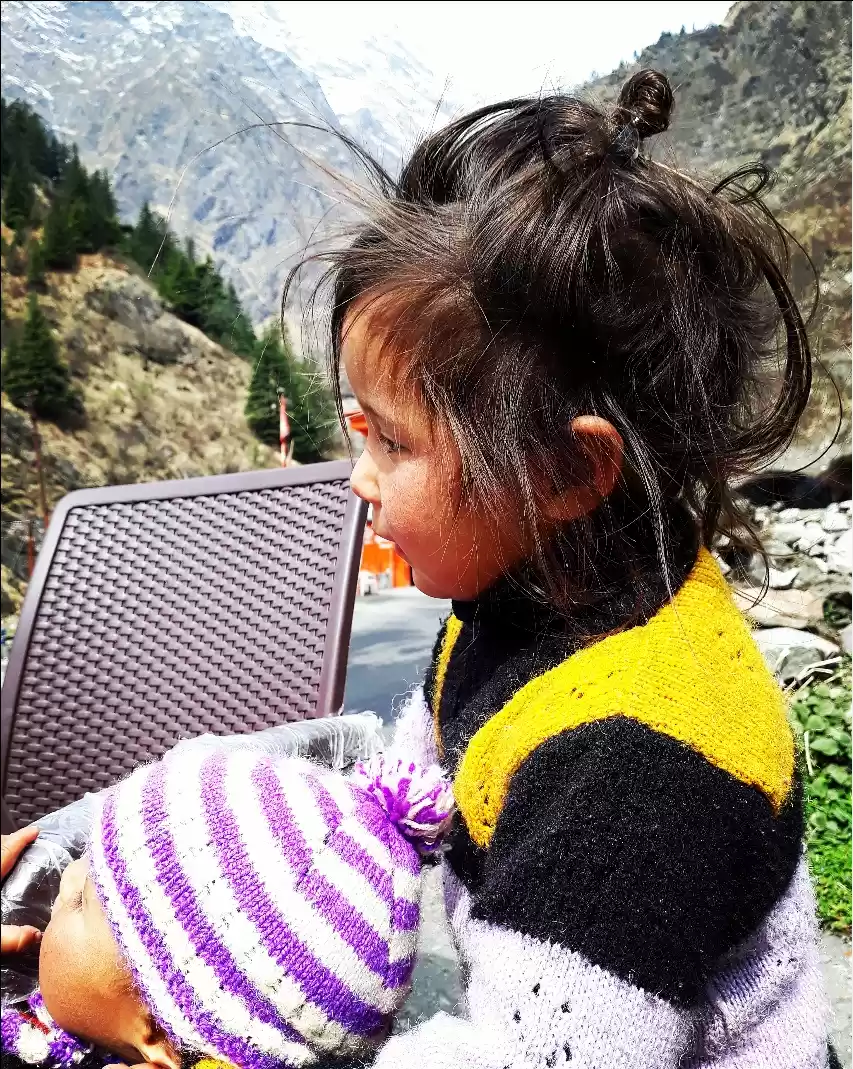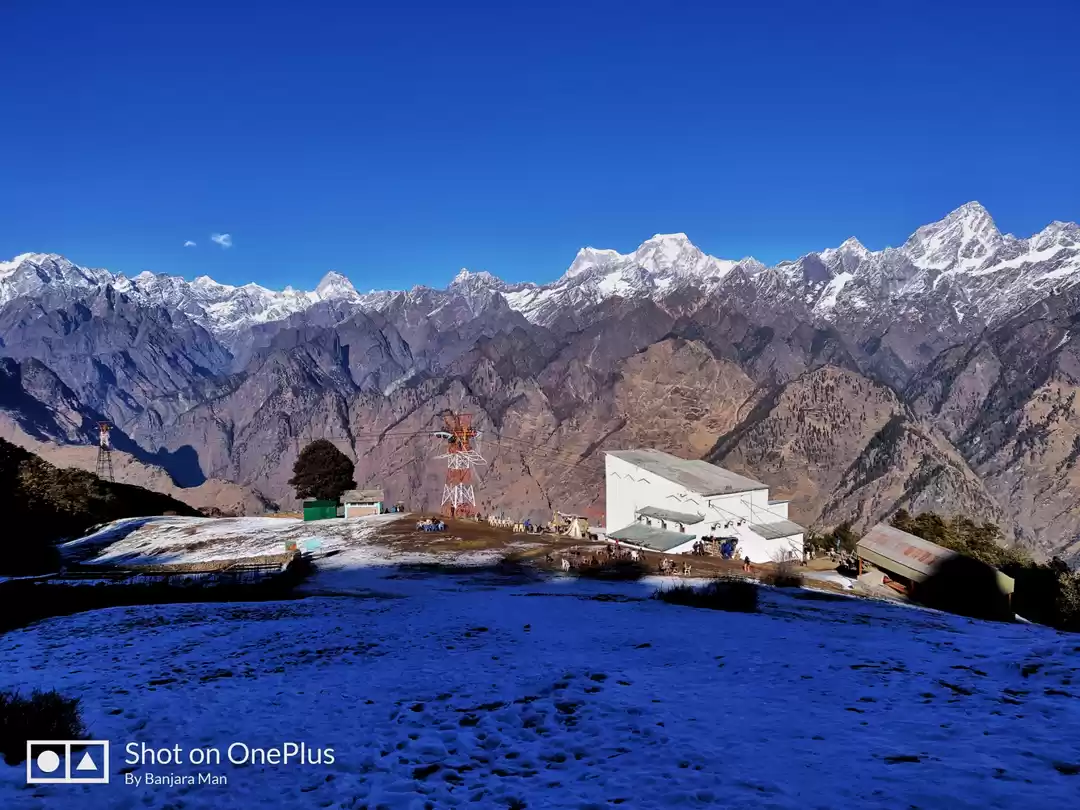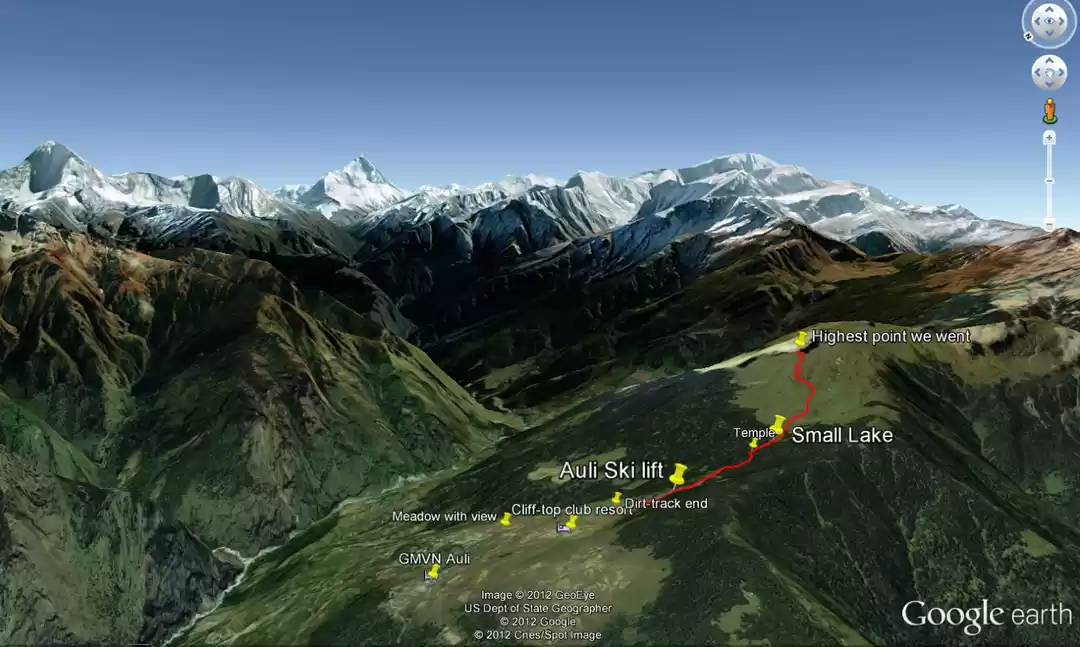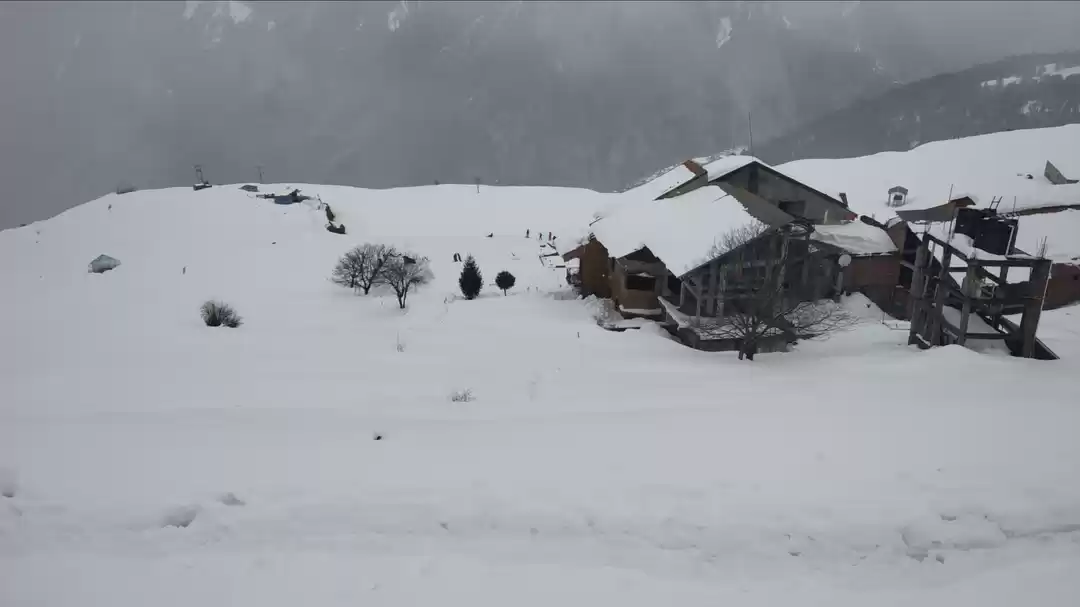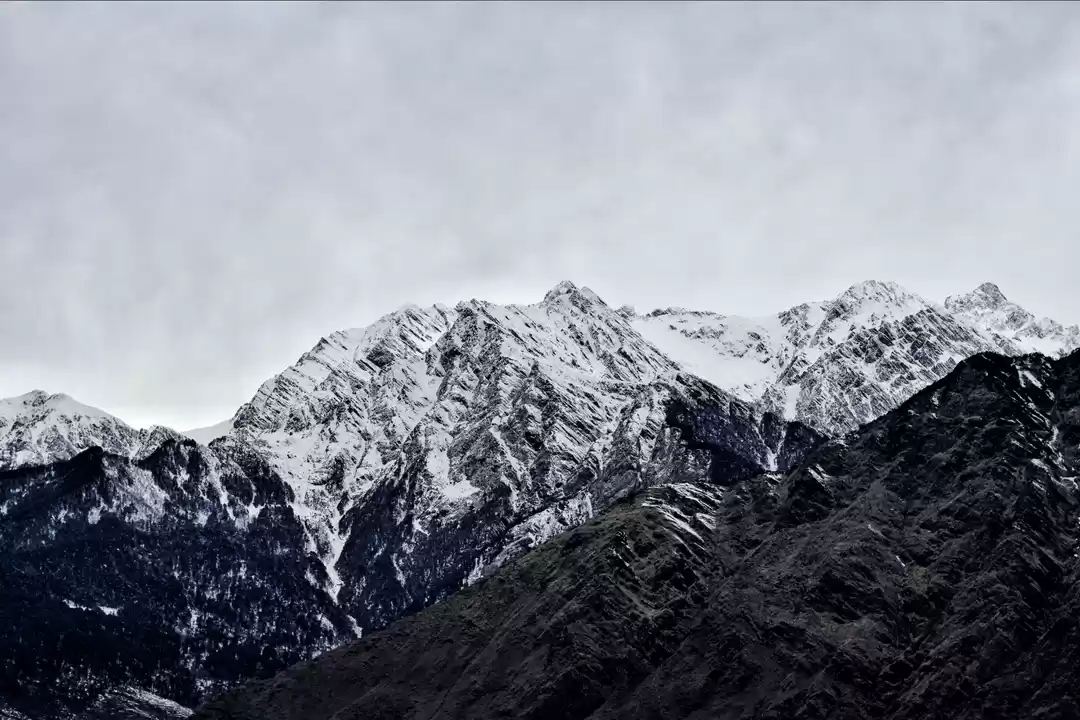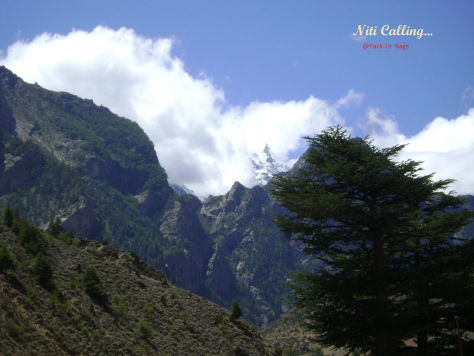
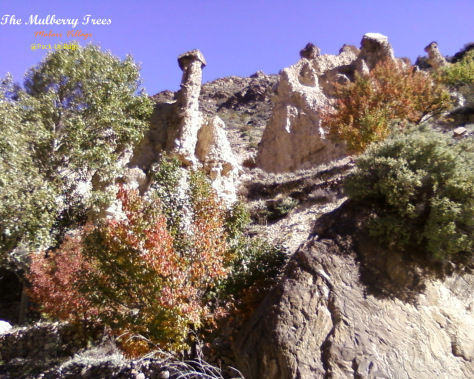
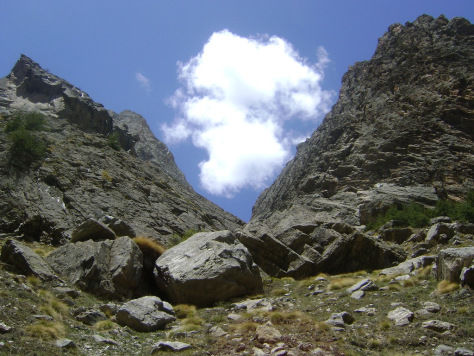
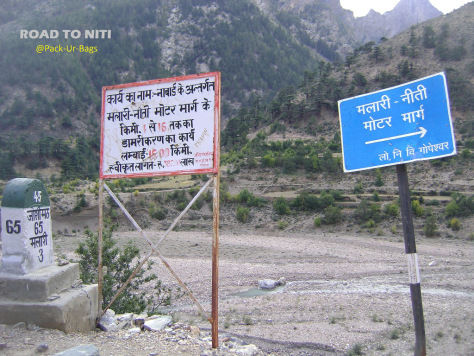
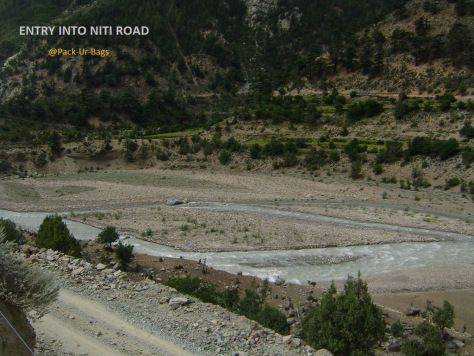
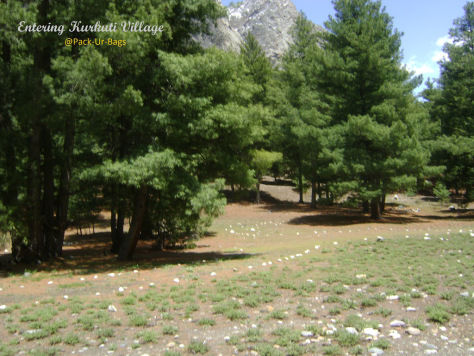
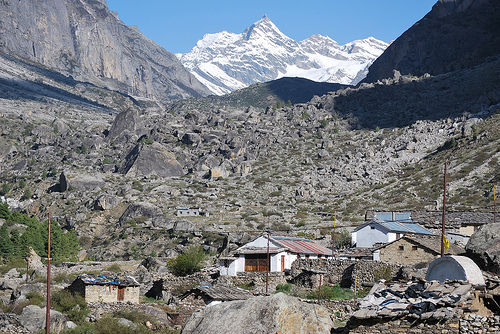
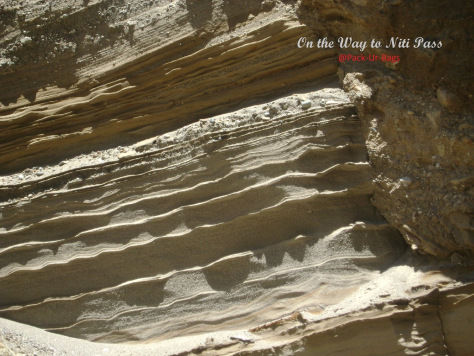
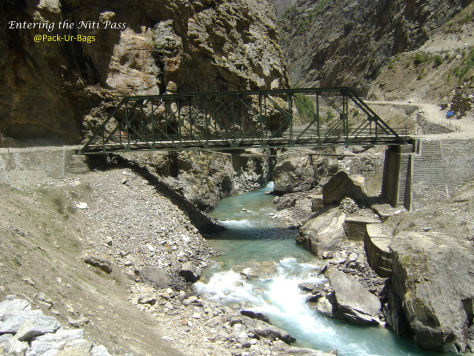
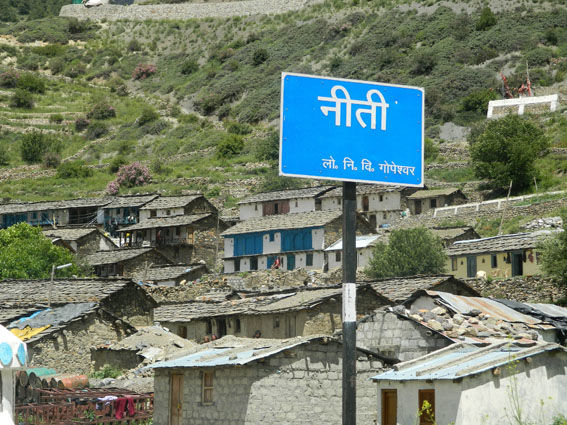
Located in the Nandadevi Biosphere Reserve, this scenic location has everything from tropical trees to clear water streams and snow-clad mountains. Niti is the last village of the Chamoli district and is adjoining the Indo-Tibetan Border. As I start from the Joshimath town, the axis towards Tapovan takes me towards the Niti Passes. Due to the popularity of the Badrinath Temple, this route is a lesser traveled one, and one can only unfold its surprises if one chooses to take the road less traveled.
It was the start of summers once again. The snow had melted on the hills (though not completely), the passes had been cleared and the plains were getting hotter. During summers, the cities such as Dehradun, Rishikesh and Haridwar get hotter especially in the months of May. Most inhabitants in the plains have houses in these remote valleys too, which are left empty during the snowfall seasons from October to February. Once the passes get cleared, it is time to climb up again, to lead a peaceful Summer season in the chill of the mountains.
As one moves further towards Niti, civilization is left several kilometres behind, and one enters the civilization of the divine. One can only understand the true color of the sky today, only after one witnesses it from here, as rest everywhere else, the sky seems to have faded in color due to pollution. A gradual climb from 7000 ft to 16000 feet, one can see the clean blue streams of water from the Dhauliganga River flowing down below in the valleys. No ‘water filter’ on earth can match the purity of the water from these streams.
A bifurcation to the left after passing the Malari village, leads to the small Niti village. The roads are zig-zag, with lots of twists and turns in the beginning, but gradually evens out. Every year, people from the plains spend their time here between April and October, grow the most exotic crops in the region, and then return to the plains before the beginning of snowfall. Kidney beans (Rajma), Basmati Rice, Apricots, medicinal herbs, mulberry and yes of course- Apples. I am not talking of the apples that you buy from the markets today that are polished with wax. I am talking of the apples whose taste you will never forget for the rest of your life, especially when you can see them in hundreds hanging from the trees. There is a season for that though, and I promise I will get to it in the end, so keep the patience.
The first village that you encounter as you enter the Niti road is Kurkuti. This village and the others are almost on the foothills and located next to the river bed. A low profile lifestyle, with everything for the livelihood derived from nature. The people in the hills still respect the gifts of nature and depend upon them for their life. They respect the natural beauty, the land, water, all that grows here and its beauty. The only noise you will hear around you is the noise of the river streams, as they flow downstream gradually. The Kurkuti village can be an ideal camping site, only if you choose not to harm the environment and not litter around. Next to the river bed, there cannot be any ideal picnic spot than this.
As one further moves ahead, the other two villages are the Bampa and Ghamshali. The lush green tropical trees protect the villagers by providing wood to protect them from the cold weather, and also prevent them from snowfall. I could also notice at some places the profile of the mountains and hillocks with sand dunes within them. Most of the mountains here are newly developed formations, clearly indicating their origin from the bottom of water. During rainfalls, Uttarakhand suffers with one of the major landslides all along its roads, mostly attributable to the industrialization in the recent past, and some attributable to the terrain. I approached the entry to the Niti village after Gamshali through a bridge. During winters, snow fills up the entire water channel making continued habitation difficult. The bridge needs to be crossed before snowfall or chances are one may get stuck on the other side.
The road to Niti is good up to Gamshali village after which it gets a little bad, as it is not black topped, but don’t worry, it will not keep you from going ahead. From the bridge, another 10 kms drive took me straight to the Niti Village. I entered through a narrow road bend into a vast open expanse to notice the village from far off, a village located in the foothills. The road further ahead would lead to Niti Pass. I spent some time here, trying to relax and enjoy the beauty around. It was afternoon, and I felt hungry.
So, here’s the time when I keep my promise and share the Apple Story- I was here in the month of September, when the snowfall nears its end and the winter is about to start. The actual season of the apples starts from end of August. So, I was lucky to pluck some apples from the trees adjoining the road. The villager who owned the orchard took me inside and allowed me to pluck some for myself, so I was actually plucking apples from the tree. I had never tasted apples so rich in nectar before. Even before I ended up eating the complete bite, my mouth was full. And I can still take that 600 Km journey from Dehradun just to pluck and eat one more….I had taken few apples (about 10 from the orchard) and could only eat two. That was mouthful I should say.
I spoke to a local villager as I noticed there were no locks in some of the houses. He said, "We have got nothing to lose, so we do not need locks here. Nobody puts on a lock in the house because whatever we need is available to us from nature. Back home in Dehradun, we have so much that can last for a lifetime”.
I was kind of feeling jealous for some time. I stayed here until evening and after that, I headed back for Joshimath. It would be a hectic 4 hour journey through the zig-zag traverses back to Joshimath town, where I was planning to stay for the night.Butthis would not be definitely the first and the last time. I will come back again, atleast for the Apples. Goodbye, Niti. Will come back soon!
Planning your road trip:
There are regular taxis running from Joshimath town for Malari Village, and also ahead for Niti. If you plan to take your own vehicle, the important contingencies that one must plan for can be:-
Fuel – No scope of fuel after Tapovan, which is 40 Km from Joshimath. Make sure you adequately top up for the way so that you are not stuck on return.Communication – Mobiles do not work there. The only way to make calls can be through BSNL satellite phones. If you need one, the State Govt. has provided a satellite phone set one to each village. You can approach the particular village to make your calls if needed. There will be a set available in Malari or Gamshali.Time of visit – Keep it during the day, night is not feasible. Period.Health – The altitude is more than 15,000 feet. If you are on a hike, you must keep your vital stats in check. Check your pulse and avoid greasy food. Eat lots of fluids as you will sweat inside the woolens and never know about it. If you face any problem in breathing, do not neglect it, it might be a HAPO (High Altitude Pulmonary Oedema). If that’s the case, just drop the trip. It’s absolutely OK. Not all can acclimatize to such weather.Weather – Unexpected Rainfall. As the day passes from morning to afternoon, the snow melts on top of the hills, making dense clouds, and then leads to rainfall. This is often a daily process, especially during summers. Secondly, afternoon time is the crucial time when the snow on the hill surface starts loosening out. An ideal way for a landslide.Eating – There are minimal resources for food and restaurants. Tapovan can be the right place to fill up your stomach before you move ahead, and carry something along for the rest of the journey.How to go about it:
If possible, start early, reach the spot early, enjoy the time from afternoon till evening (it remains pleasant). If you want to come back the same day, you can come back and stay in Tapovan.If you are planning to stay then you can drive from Tapovan and park your vehicle in Kurkuti/ Bampa/ Gamshali village and set up your camp in one of the three villages. Entice your taste buds with the local Rajma Chawal as you enjoy the campfire in the evening.Start from Joshimath town and take the route to Tapovan. The route will look like this.Joshimath ——> Tapovan ——-> Jumma ——–> Malari ——->Kurkuti ——–> Bampa——-> Gamshali ———> Niti
If you are willing to hike as well, then your hike can start from the Kurkuti Village. The hills are safe and scenic and offers abundant scope for photography. Also, the hike will be a jungle hike more or less, which means you are safe from land slides through the woods.I say again- once your camp or hike is over, please do not litter the place. The state is ‘strict’ about bio-conservation and it is our home after all.
This trip was originally published on Pack-'Ur'-Bags.
Frequent searches leading to this page:-
niti village uttarakhand, Niti road trip, uttarakhand tour itinerary, dehradun mussoorie rishikesh tour, tour and travels from delhi to nainital, nainital mussoorie tour packages from delhi, Uttarakhand tour packages




